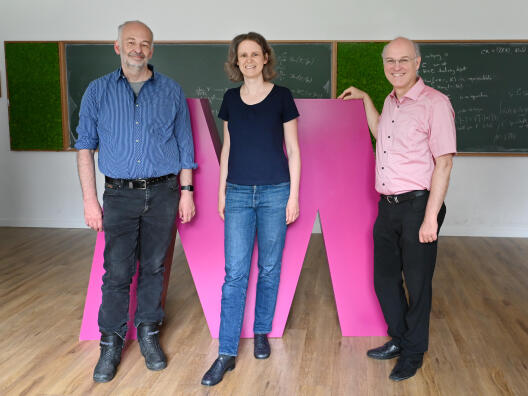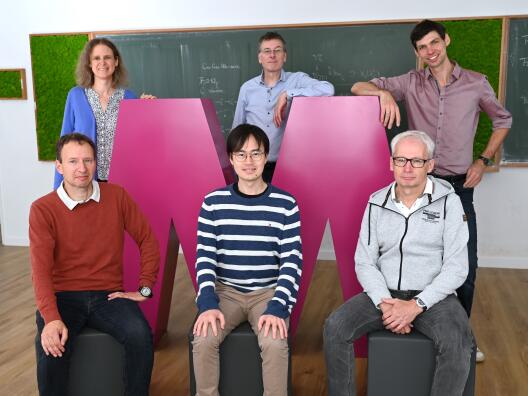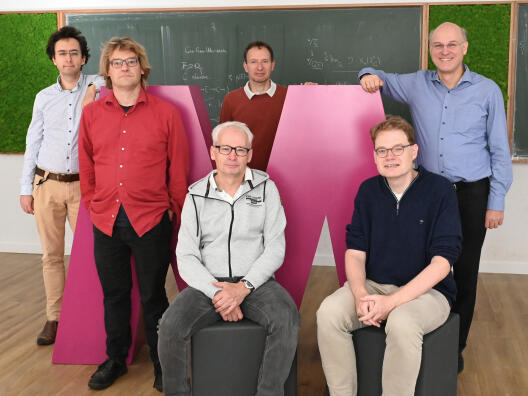since 2023
$\bullet $ Jörg Schürmann, Connor Simpson, and Botong Wang.
A new generic vanishing theorem on homogeneous varieties and the positivity conjecture for triple intersections of Schubert cells.
Compositio Mathematica, 161(1):1–12, January 2025.
doi:10.1112/s0010437x24007462.
$\bullet $ Thomas J. Haines, João Lourenço, and Timo Richarz.
On the normality of Schubert varieties: remaining cases in positive characteristic.
Annales Scientifiques de l’École Normale Supérieure, 57(3):895–959, July 2024.
doi:10.24033/asens.2584.
$\bullet $ Johannes Ebert and Michael Wiemeler.
On the homotopy type of the space of metrics of positive scalar curvature.
Journal of the European Mathematical Society, 26(9):3327–3363, July 2024.
doi:10.4171/JEMS/1333.
$\bullet $ Eugen Hellmann, Valentin Hernandez, and Benjamin Schraen.
Patching and multiplicities of p-adic eigenforms.
arXiv e-prints, June 2024.
arXiv:2406.01129.
$\bullet $ Ian Gleason and João Lourenço.
Tubular neighborhoods of local models.
Duke Mathematical Journal, March 2024.
doi:10.1215/00127094-2023-0028.
$\bullet $ Paolo Aluffi, Leonardo C. Mihalcea, Jörg Schürmann, and Changjian Su.
From motivic Chern classes of Schubert cells to their Hirzebruch and CSM classes.
In A glimpse into geometric representation theory, volume 804 of Contemp. Math., pages 1–52.
American Mathematical Society, 2024.
doi:10.1090/conm/804/16110.
$\bullet $ Eva Viehmann.
On Newton strata in the $B^+$$_d$$_R$-Grassmannian.
Duke Mathematical Journal, 173(1):177–225, January 2024.
doi:10.1215/00127094-2024-0005.
$\bullet $ Paolo Aluffi, Leonardo C. Mihalcea, Jörg Schürmann, and Changjian Su.
Shadows of characteristic cycles, Verma modules, and positivity of Chern–Schwartz–MacPherson classes of Schubert cells.
Duke Mathematical Journal, 172(17):3257 – 3320, November 2023.
doi:10.1215/00127094-2022-0101.
$\bullet $ Johannes Anschütz, João Lourenço, Zhiyou Wu, and Jize Yu.
Gaitsgory's central functor and the Arkhipov-Bezrukavnikov equivalence in mixed characteristic.
arXiv e-prints, November 2023.
arXiv:2311.04043.
$\bullet $ Urs Hartl and Yujie Xu.
Uniformizing the moduli stacks of global $G$-shtukas II.
arXiv e-prints, September 2023.
arXiv:2309.17441.
$\bullet $ Yifei Zhao.
Quantum parameters of the geometric Langlands theory.
Selecta Mathematica, 29(4):66, August 2023.
doi:10.1007/s00029-023-00868-5.
$\bullet $ Arthur Bartels and Wolfgang Lueck.
Almost equivariant maps for td-groups.
arXiv e-prints, June 2023.
arXiv:2306.00727.
$\bullet $ Jörg Schürmann and Raimar Wulkenhaar.
An algebraic approach to a quartic analogue of the Kontsevich model.
Mathematical Proceedings of the Cambridge Philosophical Society, 174(3):471–495, May 2023.
doi:10.1017/S0305004122000366.
$\bullet $ Kieu Hieu Nguyen and Eva Viehmann.
A Harder-Narasimhan stratification of the $B^+$$_d$$_R$-Grassmannian.
Compositio Mathematica, 159(4):711–745, March 2023.
doi:10.1112/S0010437X23007066.
$\bullet $ Yifei Zhao.
Spectral decomposition of genuine cusp forms over global function fields.
arXiv e-prints, February 2023.
arXiv:2302.13023.
$\bullet $ João Lourenço.
Grassmanniennes affines tordues sur les entiers.
Forum of Mathematics, Sigma, 11:e12, January 2023.
doi:10.1017/fms.2023.4.
Back to top
further publications




